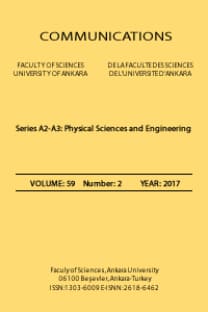DETERMINING THE MOST RELEVANT INPUT PARAMETER SET BY USING EXTREME LEARNING MACHINE
Gross Domestic Product Estimation, Extreme Learning Machine, Electricity Production sources
___
Rakic, G., Milenkovic, D., Vujovic, S., Vujovic, T., Jovic, S., Information system for e-GDP based on computational intelligence approach, Physica A: Statistical Mechanics and its Applications, 513 (2019), 418–423. https://doi.org/ 10.1016/j.physa.2018.09.010Markovic, D., Petkovic, D., Nikolic, V., Milovancevc, M., Petkovic, B., Soft computing prediction of economic growth based in science and technology factors, Physica A: Statistical Mechanics and its Applications, 465 (2017), 217-220. https://doi.org/10.1016/j.physa.2016.08.034.
Alshehry, A.S., Belloumi, M., Energy consumption, carbon dioxide emis- sions and economic growth: The case of Saudi Arabia, Renewable and Sustainable Energy Reviews, 41 (2015), 237-247. https://doi.org/10.1016/j.rser.2014.08.004.
Mbarek, M.B., Abdelkafi, I., Feki, R., Nonlinear causality between renewable energy, economic growth, and unemployment: Evidence from Tunisia, Journal of Knowledge Economy, 19 (2018), 694-702. https://doi.org/10.1007/s13132-016-0357-9.
Huang, G.B., Zhu, Q.Y., Siew, C.K., Extreme learning machine: Theory and applications, Neurocomputing, 70 (2006), 489-501. https://doi.org/10.1016/j.neucom.2005.12.126.
World Bank Open Data, https://data.worldbank.org.
Kankal, M., Uzlu, E., Neural network approach with teachinglearning- based optimization for modeling and forecasting long-term electric energy demand in Turkey, Neural Computing Application, 28 (2017), 737-747. https://doi.org/10.1007/s00521-016-2409-2.
Cogoljevic, D., Alizamir, M., Piljan, I., Piljan, T., Prljicc, K. , Zimonjic, S., A machine learning approach for predicting the relationship between energy resources and economic development, Physica A: Statistical Mechanics and its Applications, 495 (2018), 211-214. https://doi.org/10.1016/j.physa.2017.12.082.
Milacic, L., Jovic, S., Vuovcc, T., Miljkov, J., Application of artificial neu- ral network with extreme learning machine for economic growth estimation, Physica A: Statistical Mechanics and its Applications, 465 (2017), 285-288. https://doi.org/10.1016/j.physa.2016.08.040.
- ISSN: 1303-6009
- Yayın Aralığı: Yılda 2 Sayı
- Başlangıç: 2019
- Yayıncı: Ankara Üniversitesi
ENHANCED BOOST CONVERTER WITH GaN BASED POWER SWITCHES AND SWITCHED-CAPACITOR
A new astronomical parameter from remote sensing data: Astronomical clearness index (ACI)
Kazım KABA, Cahit YEŞİLYAPRAK, Onur ŞATIR
Analysis of Bragg curve parameters and lateral straggle for proton and carbon beams
Fatih EKİNCİ, Gazi Erkan BOSTANCI, Özlem DAĞLI, Mehmet Serdar GÜZEL
Impurity effects on activation energy, structure and physical properties of Ybco superconductor
DETERMINING THE MOST RELEVANT INPUT PARAMETER SET BY USING EXTREME LEARNING MACHINE
